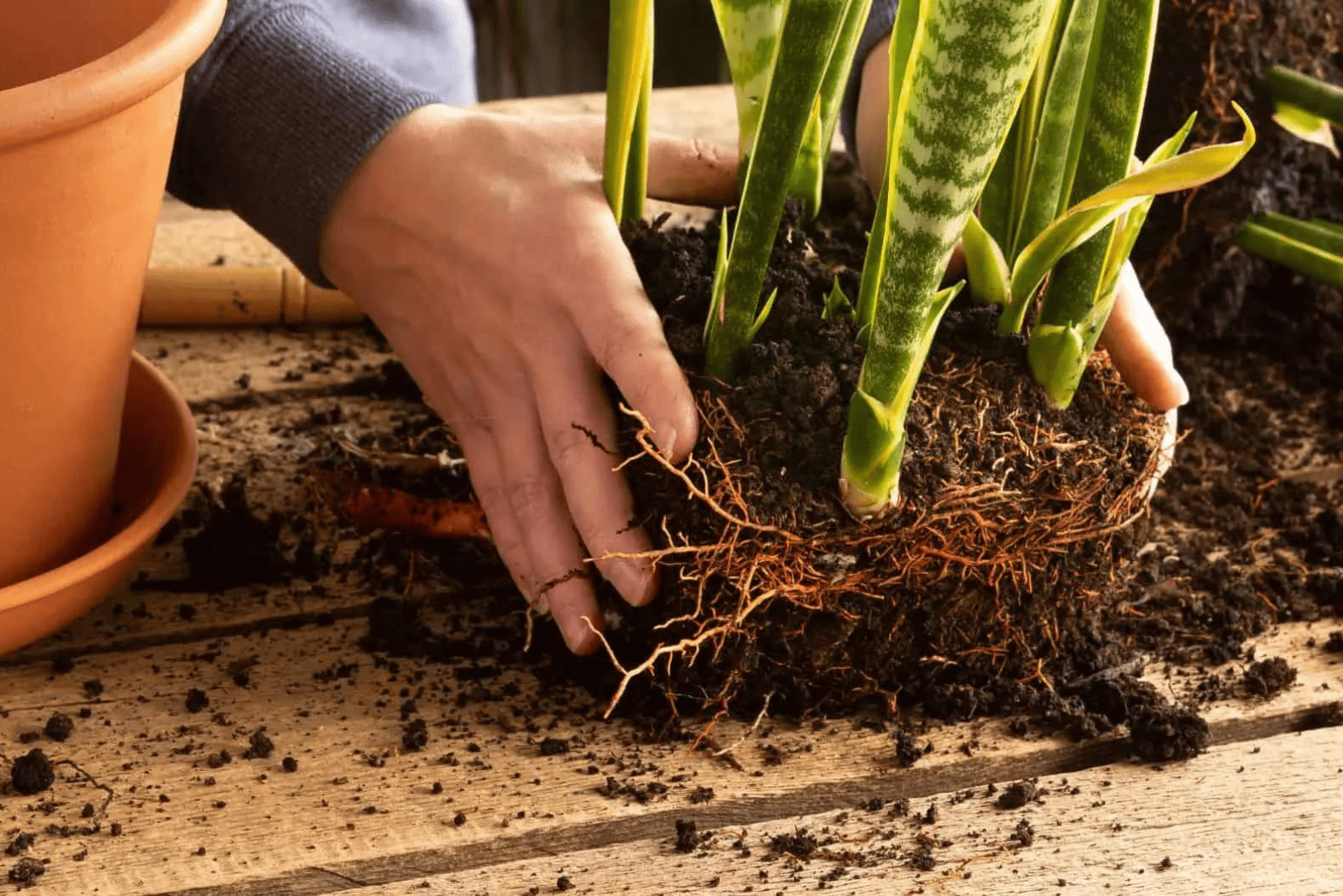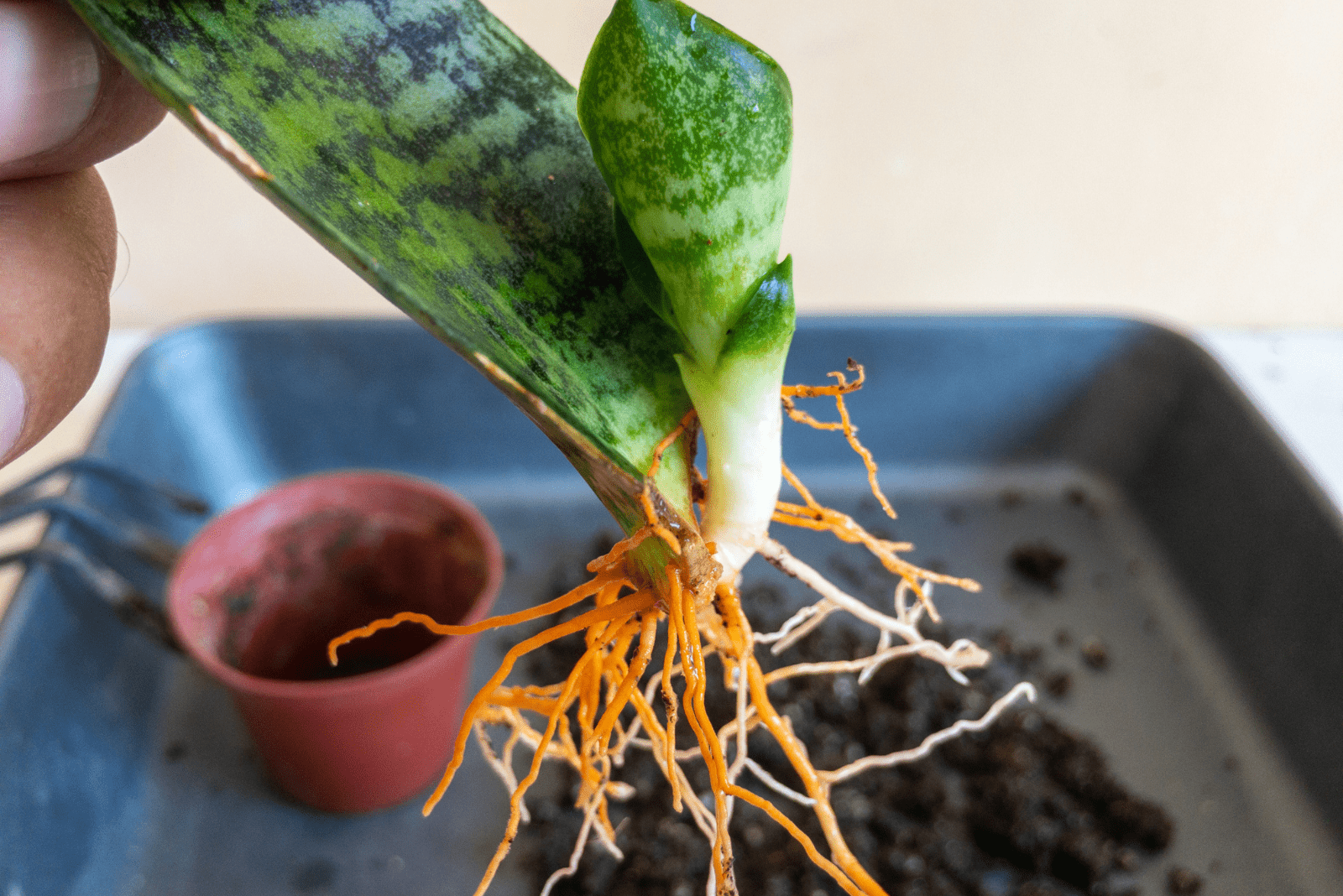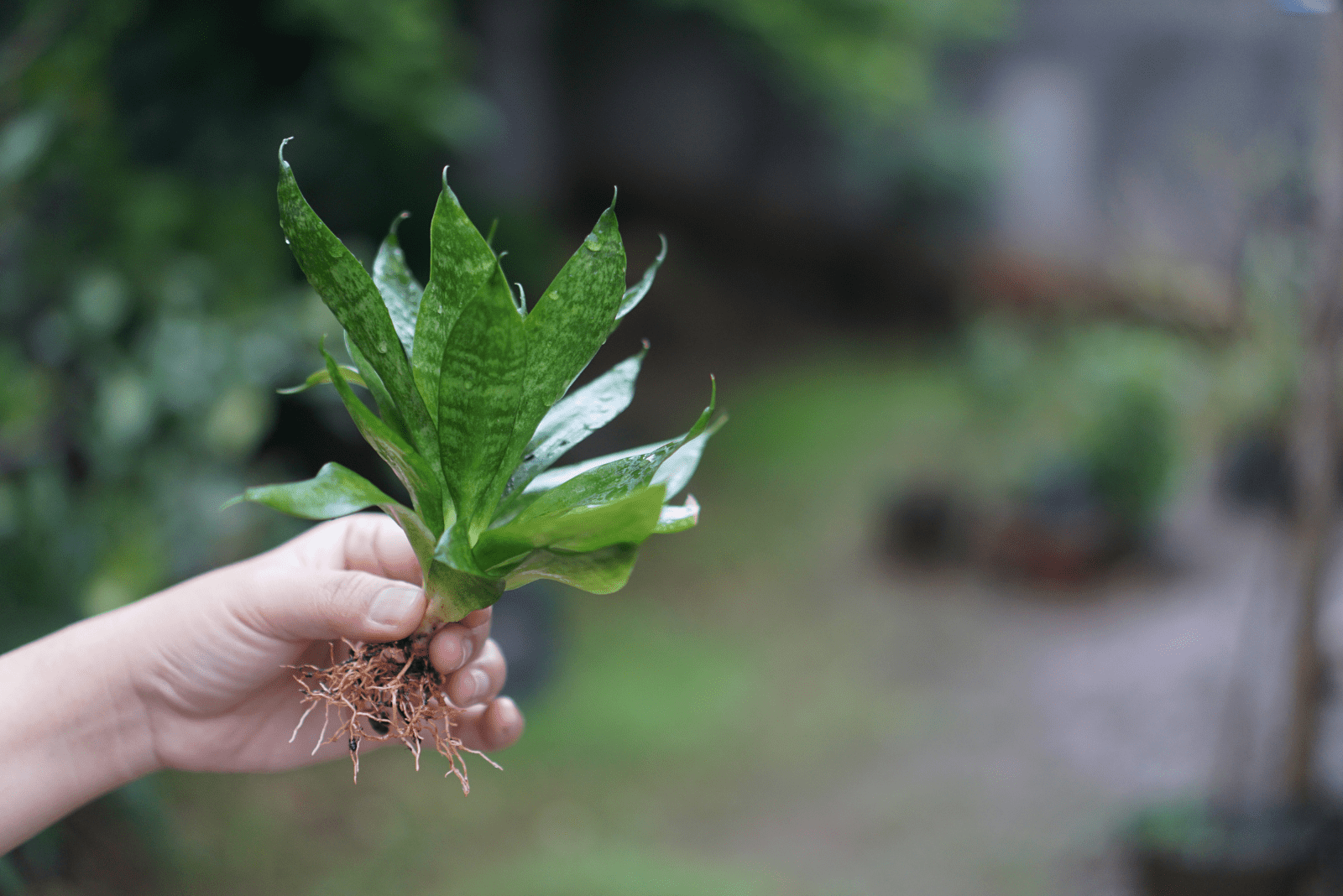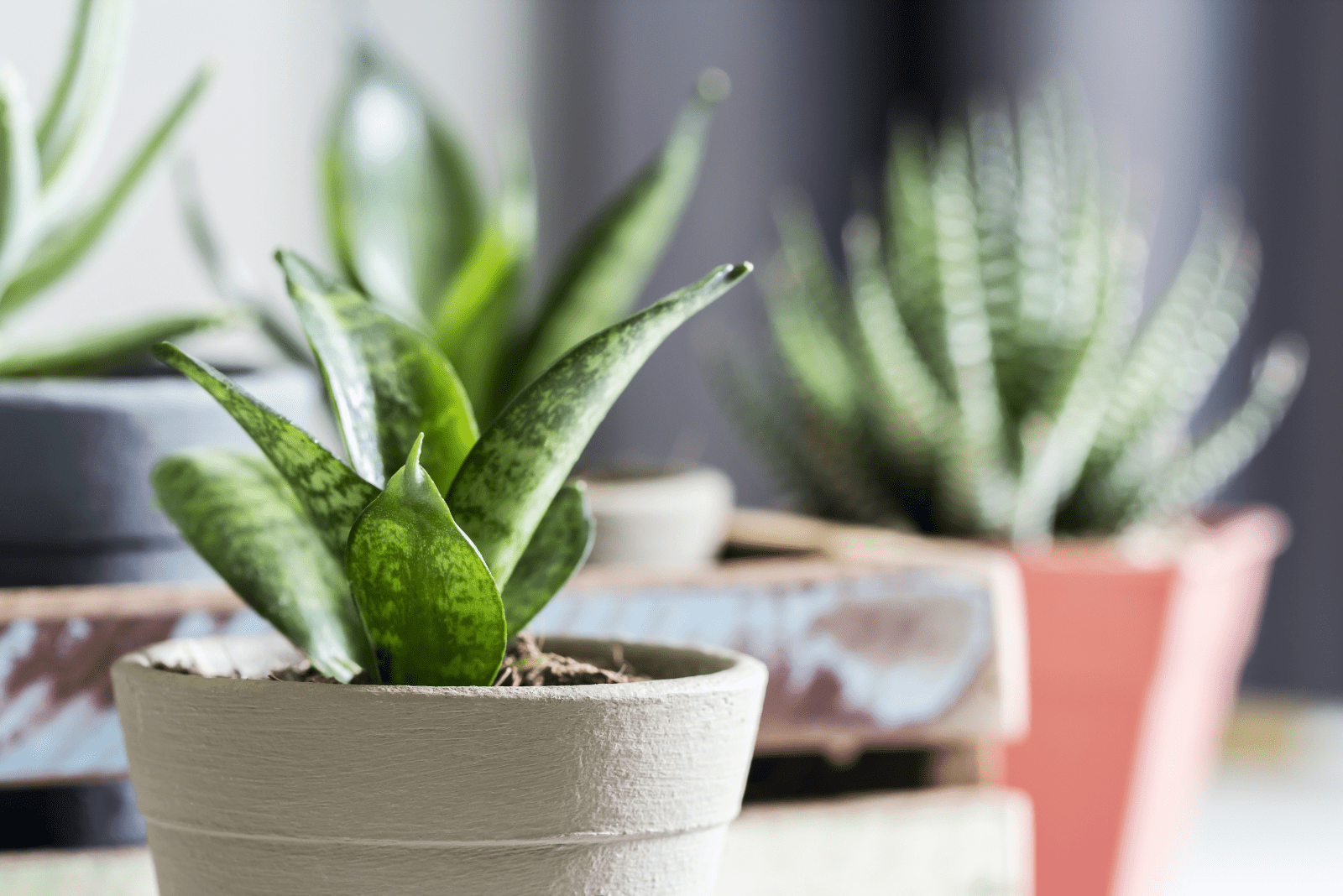We are often unaware of the importance of plant roots. If you want a healthy plant, you’ll need to keep its roots healthy.
The same goes for snake plant roots. You need to know what the roots look like, the difference between healthy and unhealthy roots, and what you can do with them.
Snake plants are grown worldwide as houseplants because they’re pretty easy to maintain and look magnificent.
I wrote this article to teach you everything about the roots of the mother-in-law’s tongue plant that you need to know. The best way to keep the plant happy and healthy is by knowing how to make the roots happy and healthy.
So, let’s get started!
What Are Snake Plant Roots?
The Sansevieria trifasciata, aka snake plant, doesn’t have a typical root system. The underground structures of these plants aren’t called roots, but rhizomes.
Additionally, these plants are succulents, which means they don’t have stems above the soil line.
Instead, the rhizomes travel through the soil until they locate a favorable position to sprout some leaves.
This feature is essential for snake plants in their natural habitats because if they cannot generate seeds, they’ll take over their surroundings.
This is the main reason Sansevieria plants are so simple to propagate.
What Should Sansevieria Roots Look Like?
When discussing the roots of snake plants, we first need to learn what healthy roots are supposed to look like.
You probably don’t frequently look at the roots of your mother-in-law’s tongue plant, which is perfectly normal due to the snake plant growth rate.
Once the time for repotting comes and the roots start poking through the drainage holes, you might be startled by what you discover.
The first distinctive characteristic of the roots of these indoor plants is the color. They will most likely be vivid orange, unlike the majority of houseplant roots, which are typically white or grayish in hue.
Don’t panic if you notice this color as it’s completely normal for snake plant roots to be vivid orange.
Another thing that indicates healthy roots in these succulents is solid structure.
If the roots of your snake plant are healthy, their smell won’t be different from the soil.
How Deep Are Snake Plant Roots?
No matter the mature size of Sansevierias, these houseplants are plants with shallow root systems.
It may seem like there is a problem if the roots of these succulent plants don’t use all the space in their pot.
This is actually typical behavior for snake plants. Their natural habitats frequently have sandy, rocky, and relatively poor soil.
The Mother-in-law’s tongue plant frequently stays in the upper 3 to 4 inches of soil, and never explores the deeper layers.
However, this growth pattern may result in unforeseen challenges. For starters, many snake plants can reach heights of more than 3 feet.
Their height, coupled with their short root systems, may cause the plant to become top-heavy and fall over. I advise selecting a pretty deep pot, but you shouldn’t fill it all the way up; 4 to 6 inches of soil mix will suffice.
Another possible issue is that, as your Sansevieria rhizomes spread out, they may put strain on or shatter the pot’s edges.
The first and only way to prevent this is by monitoring your snake plant’s growth, separating the rootball, or moving it into a bigger pot.
What Do Unhealthy Sansevieria Roots Look Like?
Now you know all about healthy roots and their growth habit, so it’s time to find out what unhealthy snake plant roots look like.
Well, it’s impossible to determine if the roots are healthy without taking the plant out of its pot or inspecting the plant above the soil.
This makes the situation with the roots pretty complicated. If they don’t function the way they should, you may notice different changes to the leaves or stems, such as discoloration, drooping, shriveling, and wilting.
However, to get a certain diagnosis you must remove the plant and inspect what’s going on below the soil line.
Root Rot
The most typical problem to watch out for is root rot, as we mentioned in the introduction. This occurs when the soil is left damp for an extended period, which allows fungi and bacteria to proliferate in large numbers and contaminate the roots of your plant. The signs of root rot below the soil line are root discoloration and deformation.
Roots that have been damaged change color to a dark brown or black. They also change in structure to become mushy, soft, and slimy.
They may also have an unpleasant odor like rotten food, eggs, or the trash bin.
Overfeeding
Another thing that may damage the roots of snake plants is overfeeding, particularly fertilizer burn.
This typically occurs when you add too much chemical fertilizer, although tap water that is mineral-rich might have a similar effect over time.
Overfeeding causes the roots to become dehydrated and end up with a crispy or wilting structure.
The best way to prevent this from happening is by flushing the soil of your Sansevieria every 2 months.
Rootless Snake Plant
You may take your snake plant out of its pot and discover a particularly unsettling sight: the roots have nearly entirely vanished!
Root rot is usually to blame.
The leaf’s thick and fleshy structure allows the plant to survive for a considerable amount of time as it acts as water storage. However, the problem is below the surface and the disease still consumes the roots.
A rootless snake plant is an unhealthy plant, and the only thing to do in that case is use leaf cuttings to propagate it.
Can You Grow A Snake Plant From A Root?
The great thing is that you can easily propagate snake plants.
One of the best ways to get new snake plants is by dividing the rootball or growing new plants from the roots.
Here’s how to grow snake plants from roots:
First you need to prepare the equipment: a new pot, clean and sharp shears, and a new potting mix.
Remove your mother-in-law’s tongue plant from its container by tapping it a little bit and tipping the pot to one side. Expose the rhizomes by removing the potting mix and then snip the ones that have 2-3 inch long roots.
Leave the rhizomes until they form a callus (a few days), and then plant them in a new pot filled with fresh potting mix.
Put the container in bright indirect light and inspect it regularly.
How To Propagate Snake Plants By Leaf Cuttings
Before you start snake plant propagation by leaf cuttings, prepare sharp and clean shears, a transparent container, a rooting hormone, new potting mix, and a new pot.
Choose a healthy snake plant leaf that’s close to the soil surface, and make a clean incision with a sharp knife. I advise cutting in a V-shape; this has several benefits and increases the possibility that the cuttings will grow roots.
You’re probably assuming that rooting the leaf cutting entails simply submerging it in water. Well, it’s not really that easy and there are a few factors to keep in mind.
First, the water in the container needs to be fresh. Don’t forget that the lower portion of the cutting should be below the water line.
Leaf orientation is another important factor; it must be exactly positioned as it was in the soil.
I advise replacing the water in the container twice a week until you see the new roots forming because the water in the container can get muddy.
Be prepared to wait for a while before roots start to show. Your cutting will likely require at least a month and a half before new growth appears.
As soon as the roots start to show, you can plant the snake plant cutting in the soil. The little shoots are unimportant, and once they have grown sufficiently they will swiftly poke their heads above the soil line.
How To Encourage Root Growth (Snake Plant Care Guide)
Although maintaining these succulents isn’t hard, you’ll need to be careful when it comes to certain conditions.
Luckily, indoor gardening is easy once you learn the basics, at least for some plants. One such plant is the snake plant.
Here are some care tips for snake plant care so that its roots stay healthy and grow alongside the other parts of the plant.
Let’s begin.
Ensure Enough Light
All growers agree on one thing; light is a tricky part of plant care. Although some plants thrive in low light, they’ll still need some for healthy development.
The snake plant is the best example because although it may grow well in low light, it won’t tolerate extremely low light conditions.
As a result, you’ll be dealing with a snake plant not growing. This wouldn’t be such a problem if snake plants weren’t such slow growers in the first place.
I recommend providing your mother-in-law’s tongue plant with bright indirect light. Enough light will result in healthy leaves and healthy roots.
Also bear in mind that enough light doesn’t include direct sunlight. If you expose your plant to direct sunlight, the leaves may scorch and display sunburn.
An inappropriate light level lowers or increases the plant’s watering needs, so you better stay on the safe side.
Adjust Humidity And Temperature
I have to warn you that these succulents don’t prefer high humidity. The problem is that high humidity levels will increase the watering needs of your snake plant because the water evaporates faster from the soil.
Go with 50% as the maximum. The best would be if you could get a humidifier to monitor the humidity and increase it if necessary.
Another thing to take into account is snake plant temperature tolerance. Believe it or not, these plants can grow even if temperatures get as high as 100 degrees Fahrenheit and if they drop to 45 degrees Fahrenheit.
If you want the best results, I recommend setting your thermometer between 65 to 85 degrees Fahrenheit.
Choose The Appropriate Potting Mix
One of the biggest disadvantages of snake plants is their susceptibility to overwatering. The first step to avoiding this issue is choosing the right potting soil.
I’ll give you a couple of tips concerning the right type of soil for these plants.
First, ensure the potting soil is well-draining because succulents won’t forgive you for compact soil containing materials that retain too much water.
You can either purchase a ready made succulent mix (available on Amazon) or go with a DIY version. For example, you can add perlite, pumice, and orchid bark for better drainage.
This will also aid aeration so the roots can breathe.
Finally, you can add peat moss or some other soil type rich in organic matter.
Adjust Watering
As mentioned, well-draining soil will help you avoid overwatering, so after choosing the right type of soil you’ll need to create a watering schedule.
You’ll get the best outcome in terms of healthy growth if you wait until the snake plant soil dries out completely before watering.
As soon as it dries out, give your plant a good soak until excess water comes out of the drainage holes.
If you leave it dried out for too long you risk underwatering, which may be one of the reasons for a skinny snake plant.
Feed Your Plant
Your snake plant will need additional nutrients once or twice during the growing season. This is another great thing about these low-maintenance houseplants.
It would be best if you could feed it with an all-purpose, balanced, liquid fertilizer.
Prune Your Sansevieria
You might need to give your snake plant a fresh start, and knowing the proper way to trim it will help you maintain your plant’s health and attractiveness.
You can prune it to get the desired shape, reduce the size, or make it look better. Always use clean and sharp tools to avoid damage.
Also prune the old leaves so that they don’t use up nutrients that new leaves need for further development.
Repotting
You’ll also need to repot your snake plant from time to time. Make sure you choose the best pot for your snake plant, which should be slightly larger than the previous one and made of terracotta.
Once the snake plant roots start poking out of the holes in the bottom of the pot, you should transplant it into fresh soil and a new pot.
FAQs
Can you eat snake plant roots?
Snake plant roots aren’t edible as they contain poisonous substances called saponins. They normally don’t kill humans, but they will upset your stomach. They occasionally cause unpleasant reactions such as swelling of the mouth or throat.
Where do snake plant roots come from?
When it comes to the underground structures of snake plants, we refer to them as rhizomes. These structures will grow roots if they receive enough water and nutrients. They’ll stop developing in soggy soil, so make sure you prevent overwatering by choosing the right potting mix and creating a perfect watering schedule.
What is the best way to propagate a snake plant?
The best way to propagate snake plants is through leaf cuttings. You can choose between water and soil as rooting mediums.
Both ways are simple and have a high success rate, so they’re perfect for beginner growers.
Wrapping Up
Indoor gardening is one of the most interesting activities in the world. Growing houseplants such as pothos, peperomias, and aloes make us happier and more interested in nature’s biological processes.
As time passes, we learn the importance of healthy root systems for plants.
To grow snake plants, you need to know their underground structures and how to keep them healthy and happy.
Snake plant roots are vivid orange and firm when they’re healthy. Be careful, however, as although they resemble delicious veggies, you don’t want to ingest them.
Until next time!
Like this post? Share or pin it for later!





